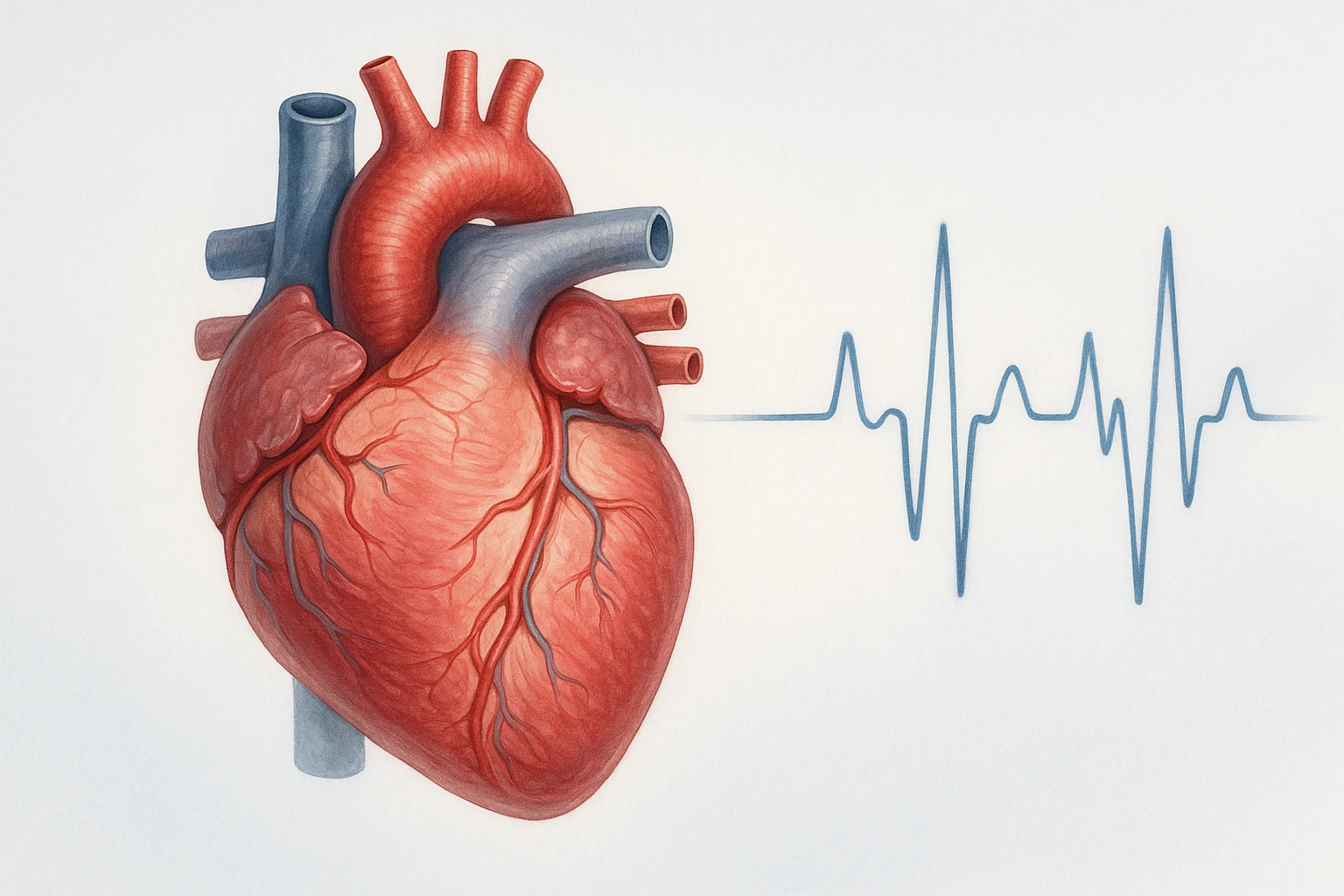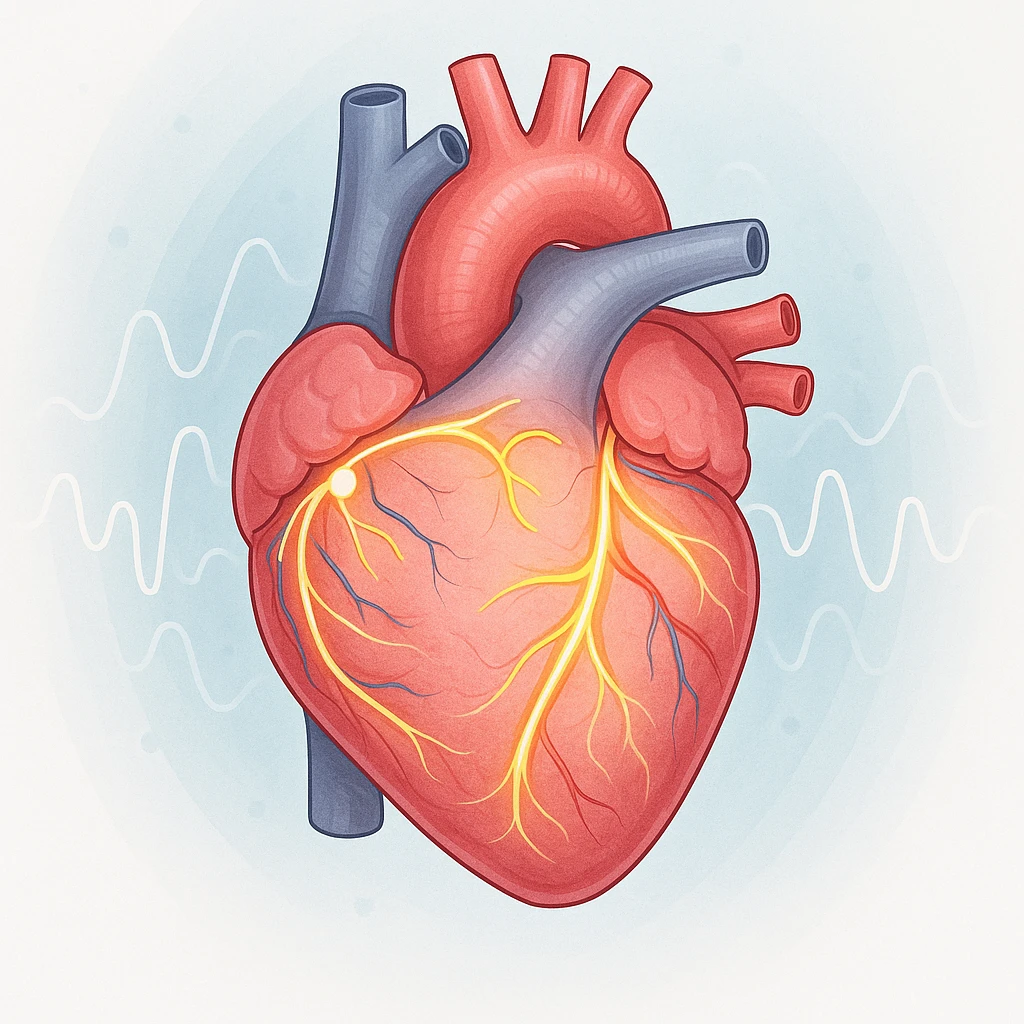Managing Low Blood Pressure Through Lifestyle and Medication
Low Blood Pressure: Definitions and Clinical Variants
Blood pressure is a key physiological parameter that reflects the force of circulating blood against arterial walls, maintaining tissue perfusion and oxygen delivery. While hypertension is a well-recognized clinical concern, low blood pressure, or hypotension, also holds clinical importance when it compromises organ perfusion or causes symptoms such as dizziness or fainting. Understanding the threshold and clinical context of hypotension is essential for accurate diagnosis and management.
Defining Hypotension
In adults, hypotension is commonly referenced as a blood pressure below 90/60 mm Hg. However, this numerical definition serves as a general guide rather than a strict diagnostic criterion. The key determinant of clinical relevance is whether the blood pressure is sufficient to sustain adequate organ perfusion. Some individuals, particularly young and physically fit adults, may naturally have lower readings without adverse effects, representing a physiologic variant rather than a pathological state.
Because blood pressure fluctuates with hydration status, temperature, emotional stress, and posture, clinicians assess hypotension by combining measured values with the patient’s symptoms and overall circulatory adequacy. This distinction between numeric thresholds and clinical impact is central to evaluating low blood pressure.
Clinical Subtypes
Several forms of hypotension have been identified, each with distinct physiological mechanisms:
- Orthostatic hypotension: The most common subtype, defined by a sustained decrease of at least 20 mm Hg systolic or 10 mm Hg diastolic pressure within three minutes of standing. It reflects an inadequate autonomic or vascular response to postural change and is frequently seen in older adults or those taking antihypertensive medications.
- Post-prandial hypotension: Occurs when blood pressure falls after eating due to splanchnic blood pooling.
- Neurally mediated hypotension: A reflex condition often triggered by prolonged standing or emotional stress.
Identifying the specific type of hypotension provides insight into its mechanism and guides appropriate management strategies.
When Is It Clinically Relevant?
Low blood pressure becomes clinically significant when it leads to symptoms or threatens perfusion to vital organs. The body generally compensates for modest pressure reductions through vascular tone and heart rate adjustments. When these compensatory mechanisms fail, patients may experience dizziness, blurred vision, fatigue, or syncope. Thus, hypotension should be evaluated not solely by its numeric value but by its physiological effects on the individual.
Recognizing when hypotension becomes harmful helps distinguish benign physiologic cases from those requiring intervention. In medical practice, the focus remains on symptom-guided assessment and maintenance of adequate tissue perfusion rather than correction of numbers alone.
Epidemiology, Causes, and Pathophysiology of Low Blood Pressure
Prevalence and Risk Patterns
Low blood pressure, particularly orthostatic hypotension, occurs across all age groups but is most prevalent among older adults. The likelihood increases with advancing age due to physiological changes in baroreceptor sensitivity, reduced vascular compliance, and the presence of chronic illnesses. In geriatric populations, orthostatic hypotension is a common finding and represents a significant clinical issue because of its association with falls, cognitive decline, and increased mortality. These outcomes highlight the importance of recognizing hypotension not merely as a numerical abnormality but as a condition with functional consequences, especially in vulnerable individuals.
Beyond aging, the prevalence of hypotension may be influenced by concurrent medical conditions and lifestyle factors that affect volume status or autonomic regulation. Understanding these population trends helps clinicians identify individuals at heightened risk and differentiate physiological adaptation from disease-related hypotension.
Volume and Vascular Mechanisms
Several physiological and pathological mechanisms can reduce blood pressure by altering circulating volume or vascular tone:
- Volume depletion: Dehydration, gastrointestinal fluid loss, or acute blood loss diminish cardiac output and arterial pressure.
- Vascular factors: Excessive vasodilation due to systemic inflammation, heat exposure, or medications decreases peripheral resistance.
These conditions represent some of the most frequent reversible causes of hypotension encountered in clinical practice. The interplay between circulating volume and vascular tone is central to maintaining hemodynamic stability, and disruption of either component can precipitate hypotensive episodes.
Medication and Neurologic Causes
Pharmacologic agents are frequent contributors to low blood pressure:
- Medication-induced: Antihypertensive drugs, diuretics, and vasodilators can reduce arterial pressure beyond the therapeutic range, particularly in older patients or those on multiple agents.
- Autonomic and neurologic disorders: Conditions such as primary autonomic failure or neurodegenerative diseases impair compensatory mechanisms that sustain blood pressure during posture changes.
In these disorders, orthostatic hypotension is a hallmark finding and may coexist with other autonomic symptoms, reflecting dysfunction in cardiovascular reflex control. The resulting impaired vasoconstriction and heart rate response contribute to chronic hypotension and its related morbidity.
Clinical Features and Diagnostic Evaluation of Low Blood Pressure
Symptom Patterns
Hypotension can present with a range of symptoms that primarily reflect inadequate cerebral and systemic perfusion. Common manifestations include:
- Dizziness and lightheadedness
- Fatigue or generalized weakness
- Blurred or dimmed vision
- Syncope or near-syncope
These symptoms often occur or worsen when standing upright, reflecting the body’s struggle to maintain blood flow against gravity. In contrast, symptoms typically improve when the individual lies down, as venous return and cardiac output are restored. The temporal relationship between posture and symptom onset provides valuable diagnostic clues, particularly in orthostatic hypotension.
In many cases, the intensity and frequency of symptoms vary depending on hydration status, medication use, or underlying conditions. Recognizing these symptom patterns allows clinicians to distinguish between transient, benign episodes and hypotension secondary to an identifiable physiological or pathological process.
Diagnostic Measurements
The diagnostic evaluation of hypotension begins with direct measurement of blood pressure under controlled conditions. The standard bedside test for orthostatic hypotension involves measuring blood pressure and heart rate after the patient has been lying supine for several minutes, followed by repeat measurements at one and three minutes after standing. A sustained drop of at least 20 mm Hg in systolic or 10 mm Hg in diastolic pressure confirms the diagnosis. This simple test provides insight into the body’s autonomic and vascular response to postural changes.
When bedside measurements are inconclusive or when patients are unable to stand safely, a tilt-table test may be performed. This controlled procedure simulates postural change in a monitored setting and helps confirm orthostatic or neurally mediated hypotension. Together, these tests establish an objective basis for diagnosis and guide further evaluation.
| Test | Purpose | Key Findings |
|---|---|---|
| Orthostatic BP measurement | Assesses postural changes in blood pressure and heart rate | ≥20 mm Hg systolic or ≥10 mm Hg diastolic drop within 3 minutes of standing |
| Tilt-table test | Evaluates autonomic and vascular response to simulated standing | Used when bedside testing is inconclusive or unsafe |
Evaluation and Red Flags
The clinical workup of hypotension focuses on identifying reversible or secondary causes. Key elements include reviewing medications that may lower blood pressure, assessing volume status, and screening for dehydration or blood loss. Additional evaluation may explore potential autonomic dysfunction when orthostatic hypotension persists without an obvious cause. By systematically addressing these areas, clinicians can distinguish between isolated episodes and hypotension secondary to systemic or neurologic disease.
Red Flags – Urgent Symptoms:
- Recurrent or prolonged syncope
- Chest pain, shortness of breath, or confusion accompanying hypotension
- Evidence of active bleeding or severe dehydration
Recognition of these warning signs is critical, as they may indicate impaired perfusion to vital organs or an underlying acute pathology requiring prompt intervention.
Management of Low Blood Pressure: Lifestyle and Medication Approaches
Non-Pharmacologic Management
Management of hypotension begins with non-pharmacologic strategies that target the underlying hemodynamic mechanisms contributing to low blood pressure. The primary goals are to expand circulating volume, improve venous return, and minimize orthostatic blood pooling. Adequate hydration is essential, and increasing fluid intake can restore intravascular volume in patients with dehydration or volume depletion. In certain cases, moderate increases in dietary salt intake are recommended when appropriate, as this helps retain fluid and elevate baseline pressure levels.
Mechanical and behavioral strategies complement volume optimization. Common approaches include:
- Using compression garments such as thigh-high or waist-high stockings to improve venous return
- Practicing physical counter-maneuvers like leg crossing, calf muscle tensing, or handgrip exercises to raise blood pressure during symptomatic episodes
- Rising slowly from sitting or lying positions to prevent abrupt pressure drops
- Avoiding large carbohydrate-rich meals that may precipitate post-prandial hypotension
These measures represent first-line interventions and form the foundation of lifestyle modification in managing low blood pressure.
Pharmacologic Therapy
When symptoms persist despite optimized lifestyle measures, pharmacologic intervention may be warranted. The choice of medication depends on symptom severity and the patient’s comorbidities.
| Medication | Mechanism | Clinical Considerations |
|---|---|---|
| Midodrine | Alpha-adrenergic agonist that increases peripheral vascular resistance | Often used as first-line therapy; titrated to relieve symptoms while avoiding supine hypertension |
| Fludrocortisone | Mineralocorticoid that promotes sodium and water retention to expand plasma volume | Monitor for fluid overload, electrolyte imbalance, and supine hypertension |
Pharmacologic therapy must be individualized and monitored closely. Blood pressure should be assessed in different postures, and renal and electrolyte status regularly reviewed to maintain safety and efficacy.
Practical Application
In clinical practice, the management of hypotension follows a stepwise approach, beginning with lifestyle interventions and progressing to pharmacologic therapy when conservative measures are insufficient. The focus remains on symptom control and maintaining adequate perfusion rather than achieving arbitrary numerical targets. Treatment plans should be regularly reassessed to adjust interventions according to symptom fluctuation and tolerance. This structured approach mitigates hypotensive episodes and supports long-term patient safety.
Long-Term Outcomes, Prevention, and Clinical Insights on Low Blood Pressure
Long-Term Complications
Chronic or untreated low blood pressure can have meaningful long-term consequences, particularly in older adults. Orthostatic hypotension, when persistent, is strongly associated with falls and fall-related injuries due to impaired cerebral perfusion during position changes. Beyond immediate physical harm, recurrent episodes can lead to loss of independence and reduced quality of life. Emerging evidence also links chronic orthostatic hypotension to cognitive decline and increased mortality, suggesting that sustained reductions in perfusion may contribute to progressive neurological and systemic effects over time.
- Increased risk of falls and fall-related injuries
- Functional decline and reduced quality of life
- Association with cognitive impairment and higher mortality
These outcomes highlight that low blood pressure, though often perceived as benign, can represent a significant clinical concern when symptomatic or persistent. Ongoing monitoring and management are therefore essential to prevent functional decline and maintain stability in vulnerable populations.
Prevention and Monitoring
Preventive strategies for hypotension emphasize maintaining adequate circulatory volume and minimizing postural stress on the cardiovascular system:
- Ensure consistent hydration and gradual position changes
- Be aware of medication effects that may contribute to hypotension
- Monitor blood pressure regularly, especially in older adults
- Reassess for reversible causes such as dehydration or anemia
Education plays a central role in prevention. Teaching patients to recognize early warning signs-such as lightheadedness or visual dimming-and to respond promptly by sitting or lying down can help avert syncope and injury. Structured monitoring programs can further assist in distinguishing transient hypotensive events from those requiring therapeutic intervention.
Misconceptions and Clinical Perspective
A common misconception is that low blood pressure is universally desirable or an indicator of good health. While mild hypotension can be normal in young, healthy individuals, persistently low readings accompanied by symptoms warrant investigation. The clinical emphasis should remain on symptom relief and preservation of organ perfusion rather than numerical normalization of blood pressure values.
From a clinical perspective, hypotension represents a spectrum-from harmless physiological variants to conditions with meaningful morbidity. Recognizing where a patient falls on this spectrum allows clinicians to tailor management appropriately, focusing on functional outcomes and overall well-being rather than isolated measurements.
Frequently Asked Questions About Low Blood Pressure
- Is low blood pressure always a sign of illness?
- Not necessarily. Some healthy people, particularly young adults, naturally have low readings without symptoms. It becomes concerning only when it causes dizziness, fainting, or poor organ perfusion.
- Why do some people feel dizzy when standing up?
- This happens when blood pools in the lower body and the heart and vessels don’t compensate quickly. The resulting drop in blood pressure is called orthostatic hypotension.
- What can trigger sudden drops in blood pressure?
- Dehydration, blood loss, certain medications, or heat exposure can lower blood pressure suddenly by reducing circulating volume or relaxing blood vessels.
- Are there warning signs that low blood pressure is serious?
- Yes. Fainting, confusion, chest pain, or shortness of breath along with low readings may indicate reduced blood flow to vital organs and need urgent evaluation.
- Can low blood pressure cause long-term health problems?
- Persistent hypotension, especially in older adults, is linked to falls, cognitive decline, and functional loss if left untreated.
- How is low blood pressure diagnosed?
- Doctors measure blood pressure while lying down and again after standing. A drop of 20 mm Hg systolic or 10 mm Hg diastolic confirms orthostatic hypotension.
- Does diet affect low blood pressure?
- Yes. Insufficient fluid or salt intake can worsen symptoms. Eating smaller, balanced meals and staying hydrated helps maintain blood pressure stability.
- What lifestyle changes can help manage low blood pressure?
- Rising slowly from bed, using compression stockings, and drinking adequate fluids can reduce symptoms and prevent sudden pressure drops.
- Are medications ever needed for hypotension?
- When lifestyle measures are not enough, drugs like midodrine or fludrocortisone may be prescribed to raise blood pressure and relieve symptoms.
- Can low blood pressure increase fall risk in older adults?
- Yes. Older adults with orthostatic hypotension are more prone to falls and injuries due to dizziness or fainting on standing.












